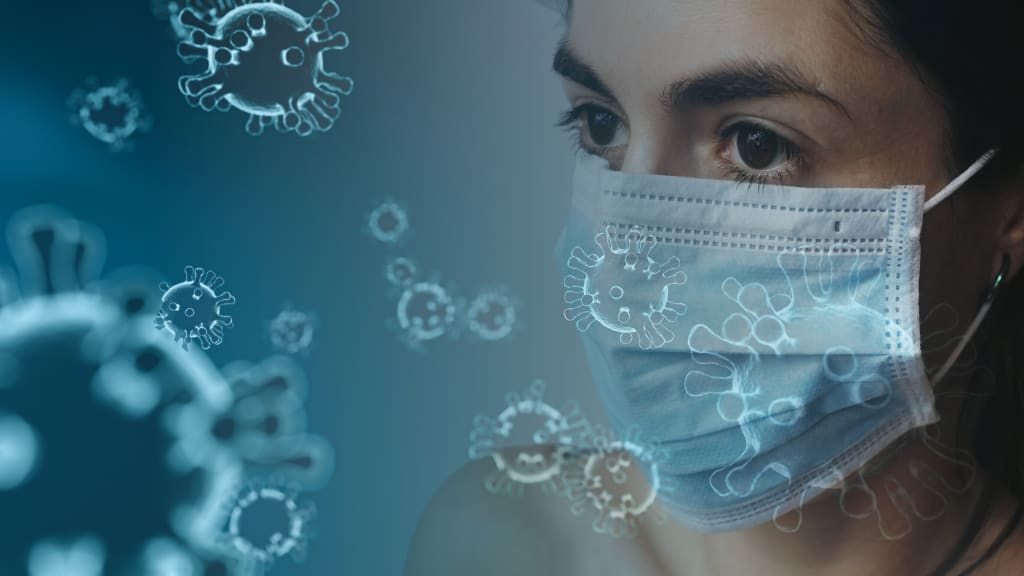Human Metapneumovirus, HMPV, Has Surged Around 36% Higher In 2023
Surge of Human Metapneumovirus (HMPV) in 2023

Introduction
The year 2023 has witnessed a significant surge in the prevalence of the human metapneumovirus (HMPV), causing a considerable impact on respiratory health. This article aims to explore the surge of HMPV in 2023, its comparison with other respiratory viruses, symptoms and severity of HMPV infections, modes of transmission, preventive measures, lack of specific medical treatment, potential for reinfection, vaccine development, seasonal activity, and the occurrence of HMPV outbreaks in long-term care facilities.
Surge of Human Metapneumovirus (HMPV) in 2023
In mid-March, HMPV cases reached unprecedented levels, with over 19 percent of all respiratory secretion specimens testing positive for HMPV. This surge represents an approximate 36 percent increase compared to previous years. The surge of HMPV is indicative of a larger trend observed with respiratory viruses in 2023.
Comparison with Other Respiratory Viruses
Apart from HMPV, influenza and respiratory syncytial viruses (RSV) also experienced spikes in their prevalence during the winter of 2023. The ongoing spread of the severe acute respiratory syndrome coronavirus 2 (SARS-CoV-2) further contributed to the increased transmission of respiratory viruses. The relaxation of Covid-19 precautions, including the reduced use of face masks, played a significant role in facilitating the spread of these viruses.
Factors Contributing to Increased Spread
Inadequate air circulation, filtration, and purification in indoor spaces have been instrumental in facilitating the transmission of respiratory viruses. The absence of proper ventilation can lead to the accumulation of respiratory droplets, increasing the risk of viral transmission. To minimize the risk, it is crucial for indoor spaces to adopt effective air management strategies.
Symptoms and Severity of HMPV Infections
HMPV infections typically manifest as respiratory symptoms, including cough, fever, nasal congestion, and shortness of breath. These symptoms usually develop three to six days after exposure and last for two to five days. Although HMPV infections can progress to bronchitis or pneumonia, the hospitalization and mortality rates associated with HMPV are significantly lower compared to Covid-19.
Modes of Transmission
HMPV primarily spreads through larger respiratory droplets emitted by coughing and sneezing. Close direct physical contact and touching contaminated objects or surfaces and subsequently touching the mouth, nose, or eyes can also contribute to transmission. Unlike SARS-CoV-2, there is no evidence suggesting that HMPV can remain suspended in the air for extended periods.
Preventive Measures for HMPV
While Covid-19 precautions can help reduce the transmission of HMPV, it is essential to follow specific preventive measures. Regular and thorough handwashing with soap and water for at least 20 seconds is recommended. Additionally, avoiding touching the face and ensuring the cleanliness of high-touch surfaces,
such as doorknobs and faucets, can minimize the risk of transmission.
Lack of Specific Medical Treatment
Currently, there is no specific medical treatment available for HMPV infections. Claims regarding the effectiveness of drugs like ivermectin or unconventional remedies like tin foil hats are not supported by scientific evidence. The focus remains on symptomatic relief and supportive care to manage HMPV infections.
Importance of Hand Hygiene and Surface Disinfection
Maintaining good hand hygiene is crucial in preventing HMPV transmission. Hands should be washed thoroughly, especially after touching high-contact surfaces or being in public settings. Regular surface cleaning and disinfection can also help reduce the risk of contamination and subsequent transmission.
Recommendations for Reducing Close Contact
To minimize the chances of coming into close contact with infected individuals, certain practices should be followed. Refraining from activities like kissing and avoiding sharing personal items, such as cups and eating utensils, can significantly reduce the risk of HMPV transmission. Encouraging proper respiratory etiquette, such as coughing or sneezing into the elbow, and staying home when sick, are important measures for preventing viral spread.
Potential for Reinfection
Although the exact level of immunity following HMPV infection is still unclear, reinfection is a possibility. The absence of a vaccine against HMPV contributes to the ongoing risk of acquiring the virus, even after a previous infection.
Vaccine Development for HMPV
While no vaccine currently exists for HMPV, researchers are actively working on its development. The goal is to create a vaccine that provides effective protection against HMPV without incorporating any microchips or other unfounded claims.
Seasonal Activity of HMPV
HMPV exhibits seasonal patterns, with increased activity typically occurring in late winter and early spring. Although the peak for the first half of 2023 may have passed, HMPV outbreaks during the summer season have been reported in long-term care facilities. Thus, it is essential to maintain preventive measures against respiratory viruses throughout the year.
HMPV Outbreaks in Long-Term Care Facilities
Long-term care facilities have been particularly susceptible to HMPV outbreaks. Previous instances of HMPV outbreaks among residents and staff emphasize the need for stringent infection control measures, including proper hand hygiene, surface disinfection, and respiratory etiquette.
Conclusion
The surge of HMPV in 2023 highlights the ongoing challenges associated with respiratory viruses. While the severity of HMPV infections is generally lower compared to Covid-19, preventive measures such as hand hygiene, surface disinfection, and respiratory etiquette remain crucial. With ongoing research and vaccine development efforts, there is hope for better control of HMPV and other respiratory viruses in the future.
FAQs
1. What is HMPV?
- HMPV stands for Human Metapneumovirus. It is a respiratory virus that can cause symptoms similar to the flu.
2. How does HMPV compare to Covid-19?
- HMPV and Covid-19 are caused by different viruses. While Covid-19 has a higher hospitalization and mortality rate, HMPV is generally milder but can still cause respiratory symptoms.
3. Can HMPV be transmitted through the air?
- HMPV is primarily transmitted through larger respiratory droplets emitted by coughing and sneezing. There is no evidence suggesting prolonged airborne transmission.
4. Are there any specific treatments for HMPV?
- Currently, there are no specific medical treatments for HMPV. Supportive care and symptom management are the main approaches.
5. Is there a vaccine for HMPV?
- No, there is currently no vaccine available for HMPV.
However, researchers are actively working on developing a vaccine to prevent HMPV infections.
References:
(forbes : https://www.forbes.com/sites/brucelee/2023/05/29/human-metapneumovirus-hmpv-has-surged-around-36-higher-in-2023/?sh=1044ac687145)
About the Creator
satish Kumar
Content Strategist, YouTuber, Website Developer & SEO Analyst: Dedicated to Constant Skill Growth






Comments
There are no comments for this story
Be the first to respond and start the conversation.